SVC-3C Oxygen-free Voltammetry cell - for application at low temperature
By using SVC-3C oxygen-free Voltametry cell, researchers can get
rid of influence of oxygen in the cell by bubbling nitrogen gas, and
also run the experiments at low temperatures.
Features
For low temperature measurement, three special attention need:
1. Fluctuation of temperature-dependent reference electrode
potential.
2. Increase of the solution resistance due to a decrease of
supporting electrolyte salt solubility.
3. Incorporation of condensation of water vapor.
Using SVC-3C Voltammetry Cell:
1. Reference electrode is setting away, using sample holder.
2. Micro electrode is used to allow for a measurement in high
resistivity solution.
3. This cell is closing.
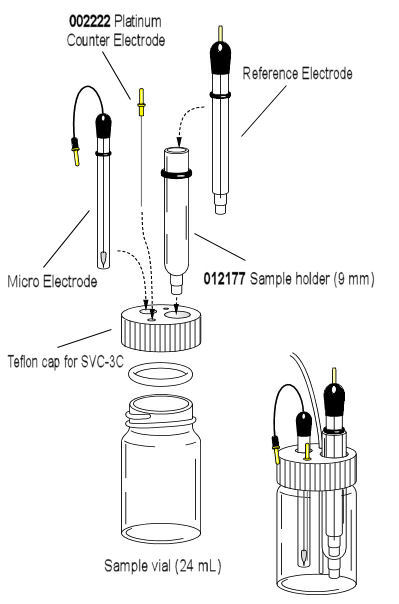
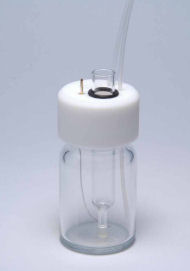
| Catalog No. | Description |
| 012013 | SVC-3C Oxygen-free Voltammetry cell |
| Contents | |
| Teflon cap for SVC-3C | |
| Sample vial 24 ml (3 pcs) | |
| 002222 | Pt counter electrode for VC-2 cell |
| 012177 | Sample holder dia 9 mm (2 pcs) |
| 010537 | Purging tube |
| Optional items | |
| 002005 | MPTE Micro Platinum electrode OD: 4 mm ID: 10 µm |
| 002006 | MAUE Micro Gold electrode OD: 4 mm ID: 10 µm |
| 002007 | MCE Micro Carbon fiber electrode OD: 4 mm ID: 7 µm |
| 012171 | RE-7 Non Aqueous reference electrode |
Example of the SVC-3C Voltammetry Cell application at low temperature
SVC-3C Oxygen-free Voltammetry Cell was tested at -40°C, by
Department of Chemistry, Graduate School of Science, Osaka
University.
Schematic diagram of the experimental cooling process
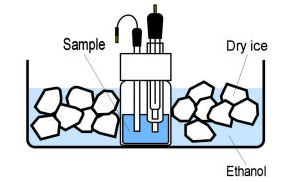
Schematic diagram of the Tetrathiafulvalene Oxi/Red reaction

1 mM Tetrathiafulvalene in CH3CN
was used as an electrolyte solution.
0.1 M Tetrabutylammonium Perchlorate:
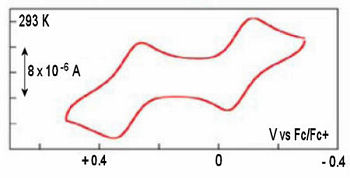
0.1 M Tetrabutylammonium Perchlorate, using Glassy carbon
electrode (OD: 6 mm, ID: 1 mm) and RE-7 Non Aqueous reference
electrode, with a scan rate of 100 mV/s.
0.001 M Tetrabutylammonium Perchlorate:
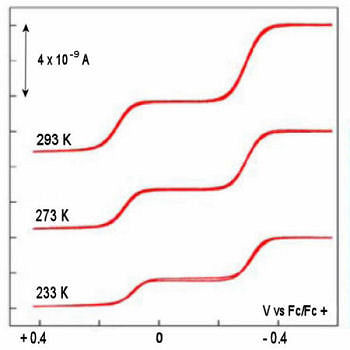
0.001 M Tetrabutylammonium Perchlorate, using MPTE Micro Platinum electrode (OD: 4 mm, ID: 10 µm) and RE-7 Non Aqueous reference electrode, with a scan rate of 50 mV/s.